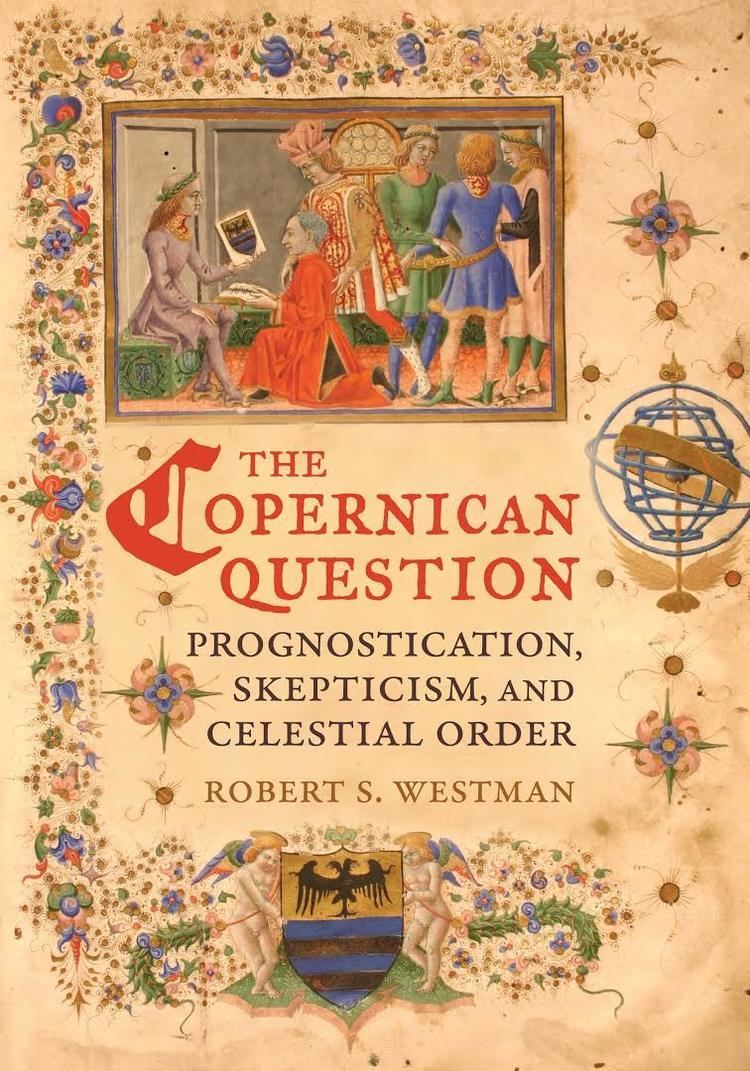8.8 /10 1 Votes8.8
Language English Pages 704 LC Class QB29 W47 2011 Page count 704 ISBN 9780520254817 OCLC 747411317 | 4.4/5 Goodreads Media type Print and E-Book Dewey Decimal 520.94/09031 Published July 2011 Country United States of America | |||||||||||||||||||||||||||||||||
 | ||||||||||||||||||||||||||||||||||
Subject History of Renaissance astronomy, astrology, and scholarship Similar The Copernican Revolution, Prutenic Tables, Narratio Prima, Commentariolus, Tetrabiblos | ||||||||||||||||||||||||||||||||||
The Copernican Question: Prognostication, Skepticism, and Celestial Order is a 704-page book written by Robert S. Westman and published by University of California Press (Berkeley-Los Angeles-London) in 2011. This book is a broad historical overview of scholarly responses to Copernicus’s De revolutionibus by the three generations immediately succeeding Copernicus. In other words, the book chronicles the intellectual debates that occurred with each succeeding generation following the publication of Copernicus's book until 1610; when, during this period, prognostication by celestial observation was considered to have practical applications.
Contents
Interpretations
As the book steps through the generations following Copernicus, the variation in application of his work is seen and finally concluding with Galileo's and then Newton's and his contemporaries. One trend is that through each generation, the discourse steps away from viewing astrology as a legitimate discipline. It is Galileo's and Newton's work that eventually distinguishes only astronomy as a mainstream scholarly discipline.
Renaissance period astronomy
Also, the book recounts Copernicus’s unseen plan, which was to fortify the "science of the stars", i.e., astrology mixed with astronomy, by buttressing its astronomy, including its computation and measurement foundation, commencing with planetary arrangement.
Additionally, the intention of this book is to unite disconnected modern studies of this historical subject, while ideally completing the studies produced by Edward Rosen, Noel Swerdlow, Owen Gingerich, Barker and Granada. Likewise, it affords a synopsis of Renaissance period astronomy, with its distinctive emphasis on astrology and the arguments and discourses of that period for astrology’s validity, viewed as a crucial segment of systematic scholarly inquiry into the celestial. Furthermore, scholars during the period looked to Copernicus's De revolutionibus for improved astrological prognostication. Therefore, astrology actually "played a central role" in the wide distribution of Copernicus's final publication.
